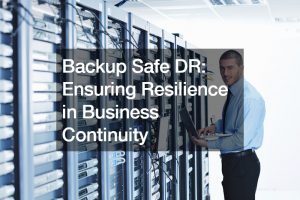The event industry was among the most heavily impacted by the pandemic. And while other businesses may soon return to normal amid the rollout of vaccines, many organizers continue to see virtual events as the only realistic option for now.
Unfortunately, that means continuing to put up with the associated hassles and nuisances. Equipment and connectivity issues will be a factor. Communication errors will crop up far more frequently than with in-person interactions. Some attendees will skip sessions and opt for the video recap instead.
The landscape is full of gaps and uncertainty, but technological innovation thrives on that. Agencies for B2B marketing were among the first to pivot online with events and trade shows, using tech know-how to maintain their clients’ networking experience.
Is there a key innovation or emerging trend that can iron out the kinks of virtual events? Or, perhaps, pave the way to a faster return to normal, physical gatherings?
Embracing the virtual format
Standard platforms such as Zoom and Teams were also the first to be adopted by virtual event organizers. In the process, they encountered the same issues any remote worker has faced, only amplified.
Some of these issues can be fixed in time. Even occasional users will become more familiar with the interface. Others will see fit to obtain a dedicated webcam and high-quality headset. Everyone can learn how to optimize their internet bandwidth and CPU usage.
That doesn’t change the fact that people frequently end up staring at a screen populated by dozens of tiny faces. It makes focus, and therefore establishing a personal connection, more difficult. It detracts from the experience in a way that’s intangible but real.
Such problems don’t necessarily lie in the domain of the software developer. They are rooted in the design of the event as an experience.
That means organizers can improve by exerting more control over the staging, presentation, and direction of each session.
Speakers can be given more screen real estate, set up in a studio environment with professional lighting and audio, and zoomed out to capture body language. Cuts to presentation material can be adroitly managed, and the presentations themselves could probably use some improvement.
The deep-rooted problems of virtual events can be addressed, not through a tech solution, but by acknowledging the medium as an entirely different format.
Continued physical uncertainty
There has always been a tacit understanding that virtual events will never replace physical ones on some level.
Some parties have more keenly felt this. Event sponsors, for instance, are more likely to bear the brunt of lost traffic and leads.
We engage with online media differently. Our minds eliminate extraneous visuals, a phenomenon known as ‘ad blindness.’ Participants walking around at a physical trade show are more likely to explore and pay attention to exhibits.
Many event attendees have also become accustomed to the industry’s association with travel itself. The experience of visiting a popular destination and seeing new attractions is part of physical events’ appeal.
If you’ve been holding out hope for in-person events to resume, the recent vaccination campaigns might have sparked hope. Optimism about the industry’s recovery has already improved.
The bad news is that much remains uncertain on this front, and it’s mostly out of organizers’ hands.
The rollout of vaccines is a work in progress, moving at different rates in each country and state. There is no international consensus on the feasibility or ethicality of using a ‘vaccine passport.’
Until greater certainty is achieved and safety guidelines approved and agreed upon by all, many participants, speakers, and sponsors will choose the virtual route, despite its limitations.

Anticipating a hybrid future
While we eagerly await the outcome of vaccine campaigns, progress is likely to take two steps forward, one step back. There will be unexpected developments. Maybe in some areas, obstacles will be encounters to achieving herd immunity. New variants have already become a problem.
There’s good reason to be optimistic about the industry’s return to normal and our ability to enjoy the physical event experience. But that needs to be tempered.
Virtual events aren’t going away. We’ll probably be relying on them almost exclusively for at least a year or two. Like remote work itself, some people will prefer the convenience of attending an event no matter where they are, even when it’s safe to travel again.
The events industry is forecast to go hybrid. No matter what unfolds on the vaccine front or how quickly we can go back to physical participation, you need to include virtual options when planning future events.
How effective your hybrid strategy turns out to be might be the decisive factor in the success of those long-term plans.






